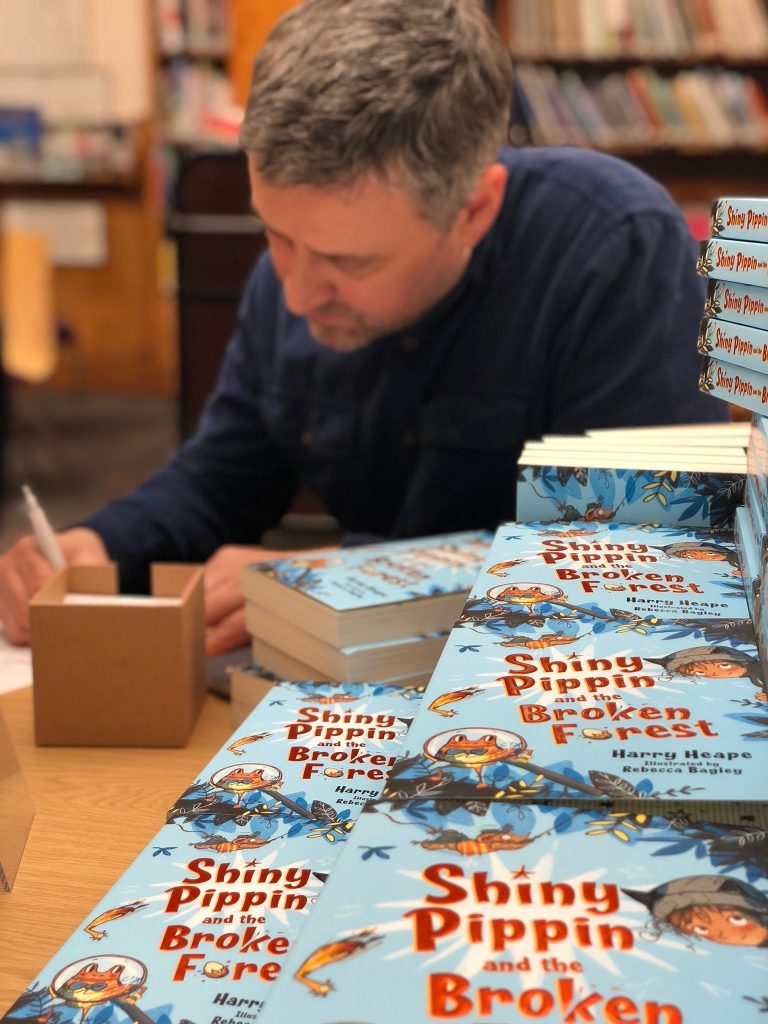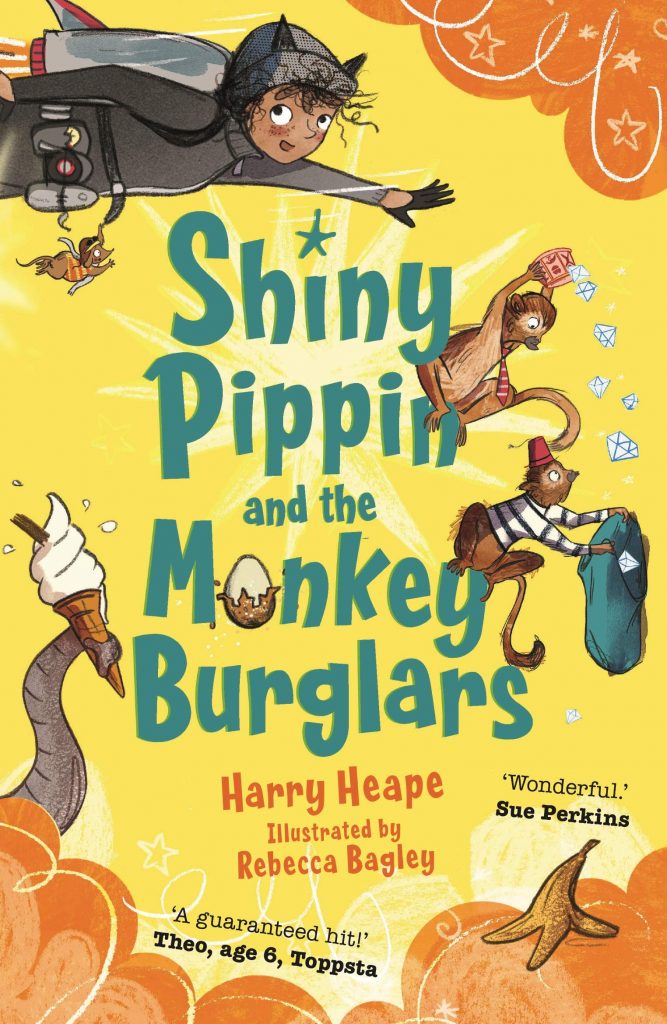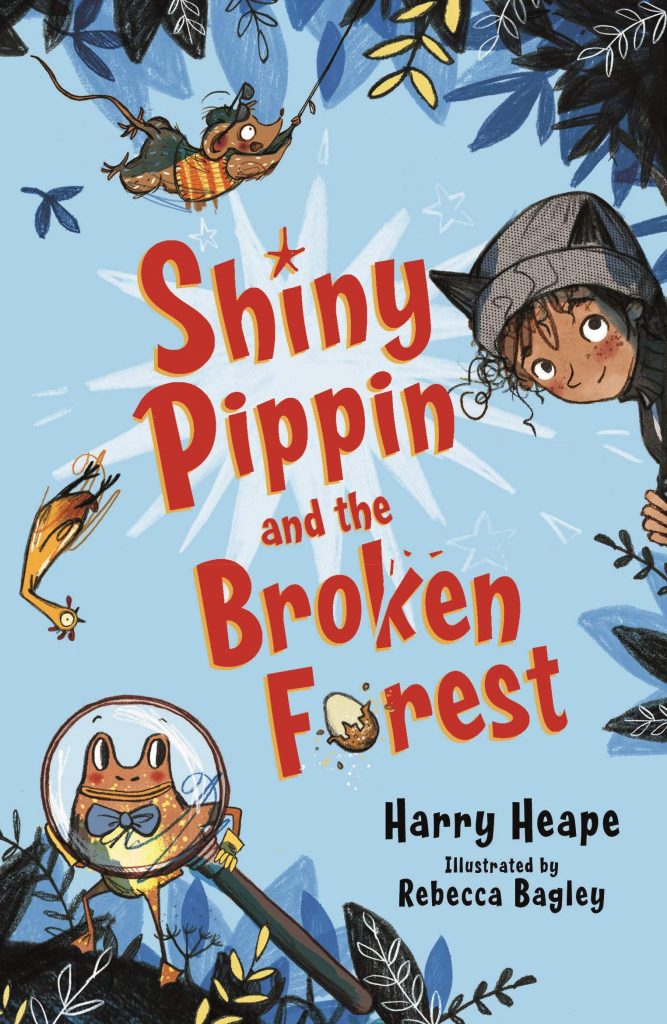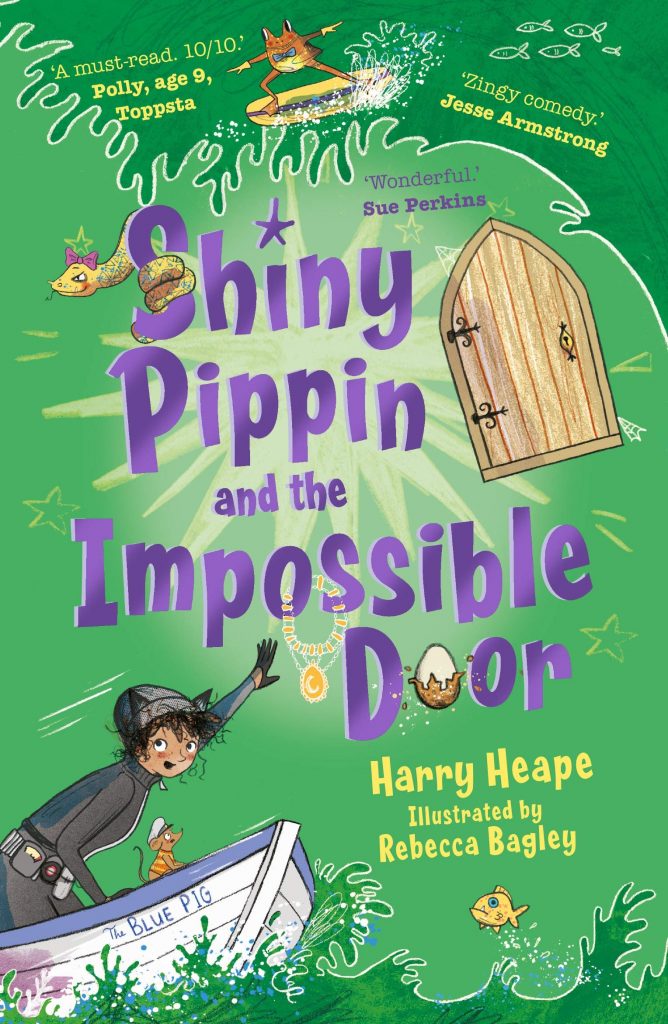We’re thrilled to welcome author Harry Heape into #TheRealm today to talk to Ian Eagleton about his magical series, Shiny Pippin…

Hello! I wondered if we could start with you introducing the Shiny Pippin series and telling us what it’s all about?
Hello to you!
The Shiny Pippin series is all about the adventures of a girl called Pippin, who has a special gift – she is Shiny, which means that she can talk to animals. Her granny has the same gift and they are supported by a huge cast of different creatures who they are able to talk to. They battle evil scientists and terrifying penguins in a series of terribubble badventures.
What age group would you say the Shiny Pippin series is aimed at?
I always say that they are suitable for children who are aged between 6 and 96. They are perfect for kids at junior school, and, importantly, kids who left junior school thirty years ago.

I love the prologue in Shiny Pippin and the Monkey Burglars – it manages to be magical, funny and moving too. How important are the prologues to the series? Do you plan them at the very start or wait to write them, when the story is complete?
Thank you! The prologues are similar in each book but crucially not the same – I use them to remind readers about the Shiny Pippin world but also to lay new clues for the book ahead. It is a nice way to introduce the conversational style, which I hope helps children to feel as though I am talking directly to them. Now I start with the prologue each time but with book one, the prologue came very late in the day when the book was finished. It seemed like a good way to introduce the magic of the Shiny world to the readers.
Throughout the series you have a lovely rapport with your readers, often addressing them, asking them questions and even telling them off if they skip your prologues! Why did you decide to engage with your readers in this way?
This wasn’t a conscious decision to start with. It happened quite naturally and sort of spilled onto the page. I had to really try hard to limit how much I was doing it (and still do) because sometimes it gets in the way of the story. I think that it comes from being a Dad and trying to muck around and joke all the time. I do this with my kids now. I find that side of my personality sloshes very easily into my books!

The wordplay and puns throughout the stories made me smile – funusual, badventure and so on. Could you give us a short glossary of some of the words you use in the stories?
Funusual – something fun and unusual like if you hear somebody fart in a lift
Confuzzled – Confused and puzzled mixed together when something is VERY tricky to understand
Badventure – a n adventure with some scary moments
Gladventure – a happy adventure
Slimportant – something small but crucial
Terribubble – basically the same as terrible BUT MUCH MORE FUN.
I was impressed at how you balance the slapstick humour and silliness with quite lyrical description (‘soft sunlight filtered through the trees’ and a note from a star which was ‘written in rhyme and told of magic, mystery and a myriad of possibilities’ sprung out at me). How important is it to you to balance these two aspects of the stories? Is it difficult to get it right?
I think that it is about picking the right moments, the right moment to be silly and the right moments to try and write a nice description. I wanted to produce something rich, a book that had something for everyone. It needed to be funny, adventurous, with a good plot, lots of twists, strong characters, well written with interesting and varied language and a bit of a message. It was about giving the book plenty of interesting layers. Writing a book is a team effort. I have always had great help from experienced and clever editors at Faber. They help me to get the balance right.
Pippin’s soulmate is a little mouse called Tony, who she shares a telepathic connection with. What sort of animal would be your soulmate and why?
I have a scruffy pooch called Otto who is as soft as snow and as cute as a button in a bandana. He is the central character of new adventure series I have coming out soon with Faber, which will be announced soon! Other animals that I would like to have as Shiny companions would be an owl, a seahorse and a tiger.
There’s some great villains in the stories, like Doctor Blowfart. Do you enjoy creating villains?
I do love a scary villain. The meaner the better and also I think it helps if they are also smelly.
As a teacher, when the children were writing, I told them not to worry too much about spelling and just enjoy it! I was interested in the fact that your stories often have spelling mistakes and words with lines through – why is this?
I couldn’t agree more! Worrying about spelling and stuff just gets in the way. There’s plenty of time to get those things right. You can teach spelling but you can’t teach imagination. I am all for kids finding reading and writing fun. Often, mistakes might have been genuine but which seemed funny and so they stayed. Also, there is something appealing about writing with such enthusiasm that you make gaffs but don’t really care- because you are having fun.
What are your earliest memories of reading and writing at primary school? Did you have any favourite authors when you were younger?
I loved Roald Dahl and I think he has influenced me. Pippin is quite like Matilda, the language he uses is fun in a similar way, like delumtious. He does great baddies too. The genius of Roald Dahl is that all his stories are so very different. I would love to have as many great ideas for stories as he did.

Rebecca Bagley’s black and white illustrations are wonderful! Can you remember the first time you saw them? What do you feel they bring to the stories?
I agree. I remember seeing them for the first time when I spoke to Faber in the very early days. What struck me is that she was already doing exactly what I was writing about – forest creatures, with real personalities. I remember seeing a great picture she had done of an elephant squeezed into a seat on a bus. I knew then I must have an elephant in book two – this is how Hooter was born.
What are your other favourite children’s stories that weave together humour, magic and adventure?
I love the Podkin books by Kieran Larwood, they are unstoppably good. Mr Gum was a huge inspiration for me, that is the one which made me want to write books for kids. I also love the way that Lemony Snicket writes, I find his books very funny and the voice he uses to tell his stories is wonderful.
What’s next in store for Pippin and her brilliant Granny?
As you know, the series is left on a bit of a cliff-hanger! There is certainly some unfinished business with a certain Dr Blowfart, so we will have to see. As I mentioned earlier I am writing a new series which is a whole heap of fun – similar in style, a comedy adventure. When they’re done I would love to catch up with Pippin and her Granny.
Finally, can you describe the Shiny Pippin series in three words?
Warm, funny and silly.

